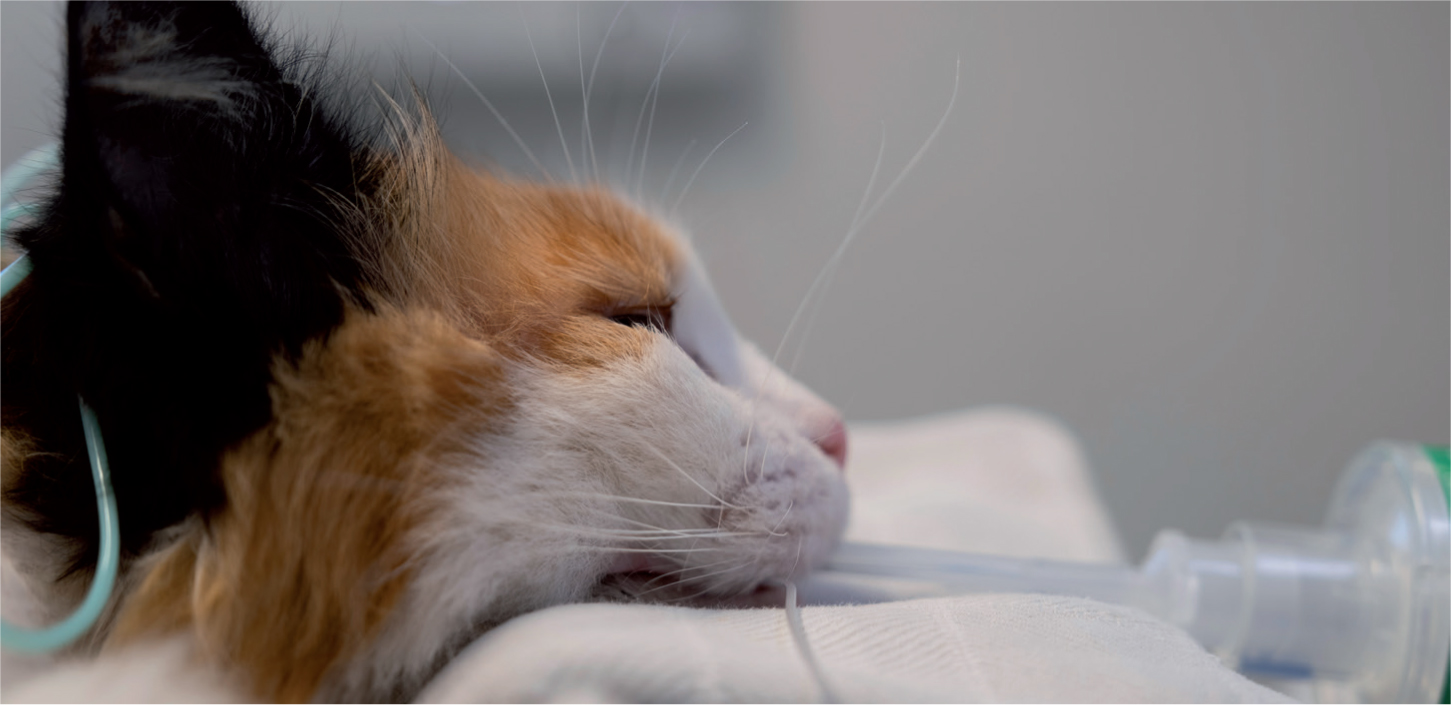In January 2023, I joined Putlands Veterinary Surgery as head nurse. During my first two months, while settling into my new role, team and environment, my main aim was to establish areas for improvement around the practice. I am passionate about continual improvement for both my personal development and the growth of knowledge and skill set within the practice. It also enabled a continued focus on striving to achieve gold-standard patient care. My passion in veterinary nursing is anaesthesia, so I felt this was a great starting point.
I noticed a trend during routine feline neutering anaesthetics, in which quite a few patients were hypotensive. Many required additional treatment because of this. Hypotension is a common complication of anaesthesia, defined as occurring when the mean arterial blood pressure (MAP) is <60 mmHg (American Animal Hospital Association, 2020). I wanted to explore this further, and during a quality improvement (QI) team meeting, I suggested that we perform a clinical audit to look at perioperative blood pressure in cats and dogs undergoing routine neutering procedures. I used resources from the Royal College of Veterinary Surgeons Knowledge website on how to run an audit. I also had discussions with the clinical team to understand which measurements to be taken and which factors would need to be kept the same for all patients.
The target was for all patients to maintain an average MAP >60 mmHg during their anaesthetic. This was important because clinical evidence suggests a minimum value of 60 mmHg is necessary for the perfusion of vital organs, such as the brain, heart and kidneys (Cooper et al, 2020). Hypoperfusion of these organs means inadequate oxygen delivery to the tissues and poor removal of waste products, which could lead to organ dysfunction and shock (Boag, 2015).
The initial audit studied pre-medication drugs given for all neutering procedures and acted as a means to compile data. The animals chosen for auditing were American Society of Anesthesiologists (ASA) class I and under five years old. Each patient received a preoperative health check, including a blood pressure reading using a Doppler machine to measure systolic blood pressure, to ensure the patient was normotensive. The systolic normotensive values for cats and dogs were considered to be 90–120 mmHg (Cooper et al, 2020). The Doppler machine was considered more reliable for patient monitoring before premedication than the oscillometric machine (Duke-Novakovski, de Vries and Seymour, 2016).

The patients received the practice’s standard premedication protocol: acepromazine 0.02 mg/kg combined with methadone 0.3 mg/kg. Anaesthesia was then induced with propofol (6 mg/kg for cats and 4 mg/kg for dogs) to effect. All dose rates were guided by the British Small Animal Veterinary Association Small Animal Formulary, 11th edition. All patients were maintained under anaesthesia using isoflurane and kept at a surgical plane of anaesthesia appropriate for the patient and surgery.
All parameters, including temperature, heart rate, respiratory rate, mucous membranes and reflexes, were monitored to ensure this surgical plane of anaesthesia was maintained. Blood pressure was also monitored throughout the surgical procedure using the oscillometric monitoring machine. This was chosen over the Doppler machine once patients were anaesthetised, as it monitored systolic, diastolic and mean arterial blood pressure (Cooper et al, 2020). All measurements were recorded on the anaesthetic chart.
The second part of our audit involved a change to the premedication drugs, and all data were re-collected. The change, initiated by the clinical team after a meeting, was to use medetomidine combined with methadone. The dose rate of medetomidine was 0.005 mg/kg, as guided by the BSAVA Small Animal Formulary, with the same dose rate of methadone (0.3 mg/kg). All other factors remained unchanged.
The data collected throughout the audit revealed that in the first audit cycle, in which patients received acepromazine and methadone premedication, 42% of our total patients had an average MAP <60 mmHg after the first five blood pressure readings post-induction. In all, 50% of cats and 38% of dogs had an average MAP <60 mmHg after the first five blood pressure readings post-induction.
During the second audit cycle, in which patients received medetomidine and methadone premedication, 11% of our total patients had an average MAP <60 mmHg after the first five blood pressure readings post-induction. In all, 0% of cats and 15% of dogs had an average MAP <60 mmHg after the first five blood pressure readings post-induction.
The results showed a vast improvement in the decrease of hypotensive patients during anaesthesia when medetomidine and methadone premedication were used, compared with the acepromazine and methadone premedication combination. This audit suggests a link to hypotension, with acepromazine used as a premedication, in anaesthetised patients. However, it must be noted that patients who received medetomidine and methadone premedication required less propofol induction agent, and this could also have affected blood pressure, which would need further investigation (Allerton, 2023).
This QI initiative has had a positive impact in practice for both patient care and clinical team knowledge, and it built on the team’s ability to adapt to change. The results clearly show that a change from our premedication protocol of acepromazine and methadone to medetomidine and methadone decreased the number of patients experiencing hypotension during anaesthesia. This meant that fewer patients were at risk of developing the side effects associated with hypoperfusion of the vital organs. The team concluded that they would continue using medetomidine and methadone premedication for all surgical procedures (unless a patient had comorbidities that suggested the use of an alternative sedative medication).
The recognition this audit received from the RCVS Knowledge awards has encouraged many other team members at Putlands to consider initiating further clinical and non-clinical audits, which is always welcomed to further improve client and patient care.
Useful resources
RCVS Knowledge: Clinical audit - https://knowledge.rcvs.org.uk/quality-improvement/tools-and-resources/clinical-audit/
RCVS Quality Improvement: https://www.rcvs.org.uk/lifelong-learning/rcvs-leadership-initiative/rcvs-leadership-library/quality-improvement/


